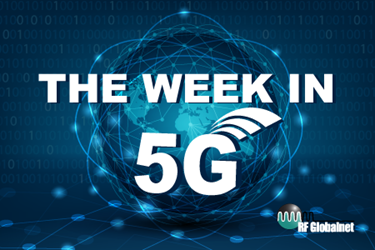The Week in 5G: 6/9/2020 — U.K. Rethinking Huawei; Pentagon Trials 5G at More U.S. Military Bases
By Ed Biller

Twitter’s inconsistent policing of content still does not hide or delete tweets linking 5G to COVID-19 (coronavirus), but at least some of those messages now are being tagged with a message that reads “Get the facts on Covid-19,” reports CNBC.
“When clicked on, users are taken to a page titled ‘No 5G isn’t causing coronavirus’ which debunks the conspiracy theory by linking to credible media websites and other official sources,” CNBC reports. A Twitter statement to CNBC noted “We’re prioritizing the removal of COVID-19 content when it has a call to action that could potentially cause harm… [but] we will not take enforcement action on every Tweet that contains incomplete or disputed information about COVID-19.”
An opinion article by FCC General Counsel Thomas M. Johnson Jr., published June 4 in the Washington Post, said 5G conspiracy theories and decisions by local governments based on "irrational fears and unproven theories” could be "catastrophic," given connectivity’s vital role in social and economic recovery from the pandemic.
Related, a UK man has been sentenced to three years in jail for setting fire to a Vodafone phone mast after he concluded 5G was connected to COVID-19.
Also in the UK, the government is again reviewing the impact of allowing Huawei telecoms equipment to be used in British 5G networks – despite earlier approving a limited role for Huawei in building those networks, one that banned Huawei from supplying "sensitive [core] parts" of the network and permitted the tech giant to account for no more than 35 percent of the kit in a network's periphery (e.g., radio masts), reports BBC News.
In Denmark, the government wants the freedom exclude 5G technology suppliers from providing critical infrastructure if they are not from countries considered security allies, reports Reuters, citing ITWatch.
“In order to protect Denmark and the Danes, we want to collaborate with someone with whom we already have alliances,” Minister of Defence Trine Bramsen told ITWatch, stated the Reuters report.
In the U.S., Naval Station Norfolk is one of twelve U.S. military installations set to conduct 5G experimentation and testing, according to the Department of Defense. The base is one of seven selected in the second round of installations. The others are Joint Base Pearl Harbor-Hickam, Hawaii; Joint Base San Antonio, Texas; the National Training Center (NTC) at Fort Irwin, Calif.; Fort Hood, Texas; Camp Pendleton, Calif.; and Tinker Air Force Base, Okla., reports The Virginian-Pilot.
“The Defense Department will solicit prototype proposals this summer and the goal is to have them working by the end of fall,” reports The Virginian-Pilot, adding testing at Naval Station Norfolk “will focus on ship-wide and pier connectivity.”
In Thailand, True Corporation and the Nopparat Rajathanee Hospital in Bangkok have partnered to equip ambulances with “CCTV cameras capable of live-streaming all activities taking place inside the vehicle, and that staff can wear augmented reality (AR) glasses to transmit images in real time to doctors,” reports RCR Wireless News. The aim is to help medical staff better prepare themselves and their equipment for patients’ arrival and treatment.
In Japan, Sumitomo Corporation and NEC Corporation have inked a deal with the Tokyo Metropolitan Government on a “preliminary/trial installation and verification” of smart poles, two types of which the government will install in the Nishi-shinjuku area of Tokyo by the end of this month.
Per an NEC press release, the Tokyo Metropolitan Government’s TOKYO Data Highway Basic Strategy outlined last year calls for the construction an ultra-high-speed mobile Internet network in the city. It defines the smart poles being installed as “multi-functional poles equipped with communication base stations, Wi-Fi, street lighting, signage, etc., and they are expected to serve as infrastructure useful for the provision of new community services.”
